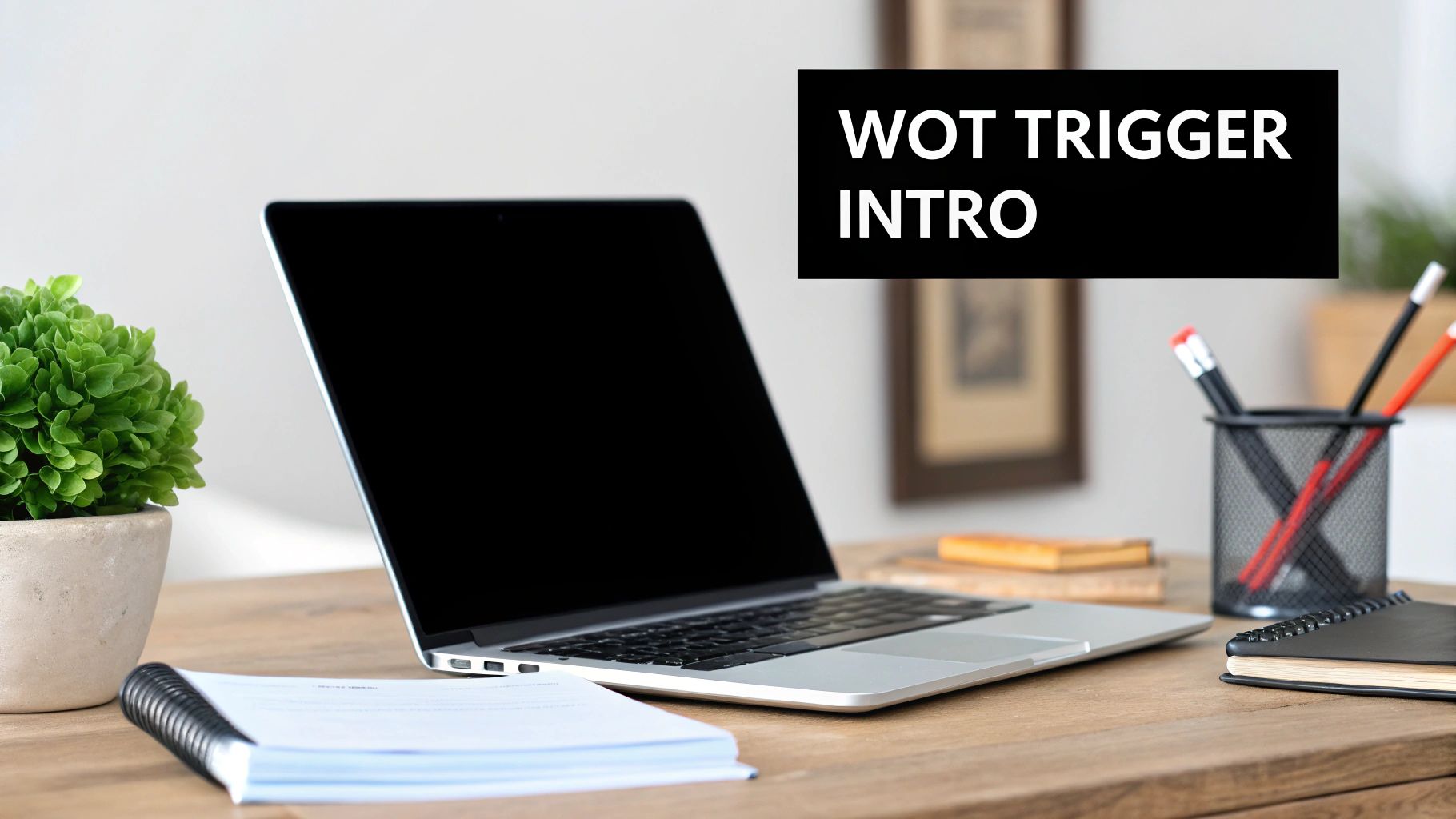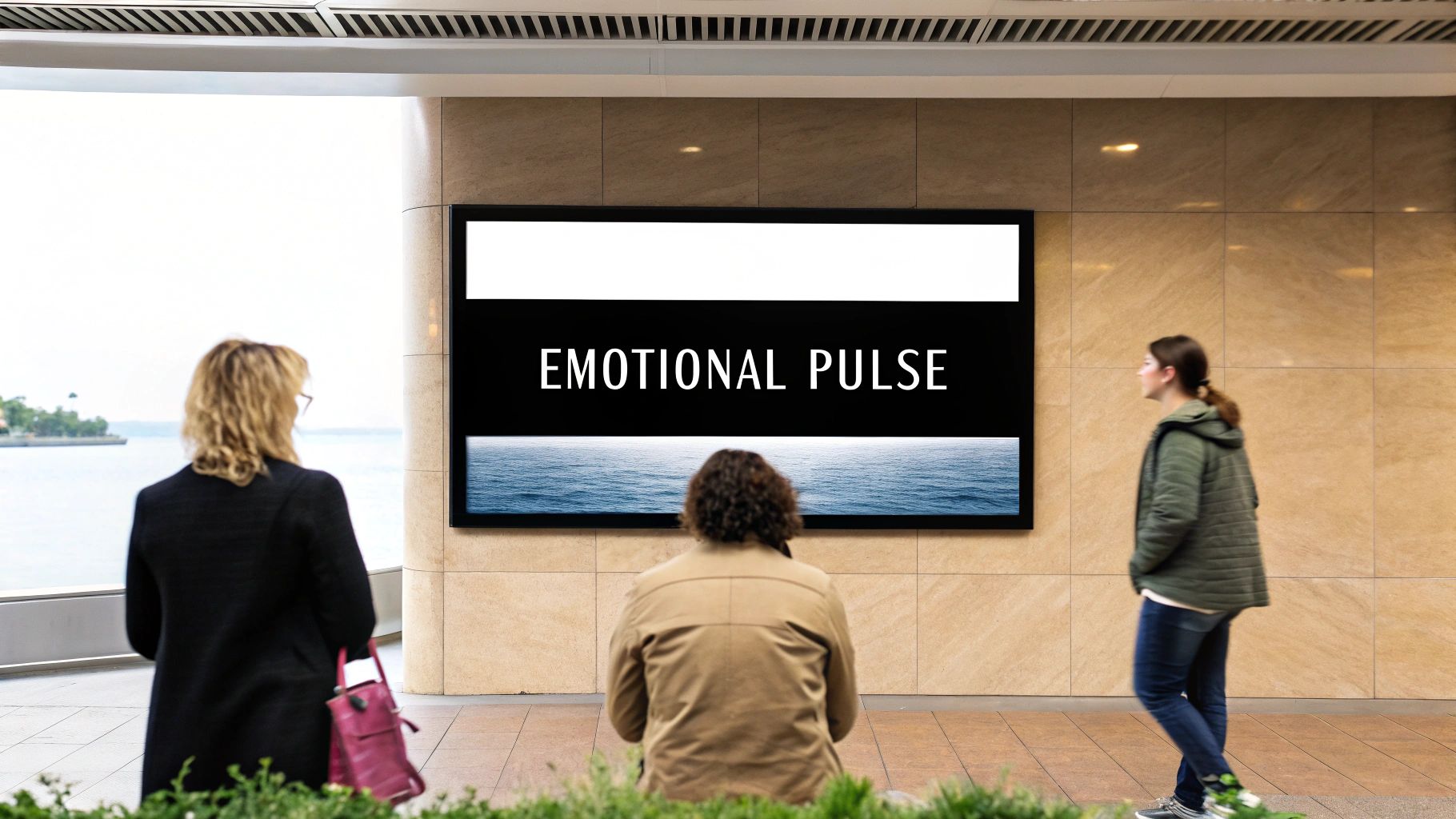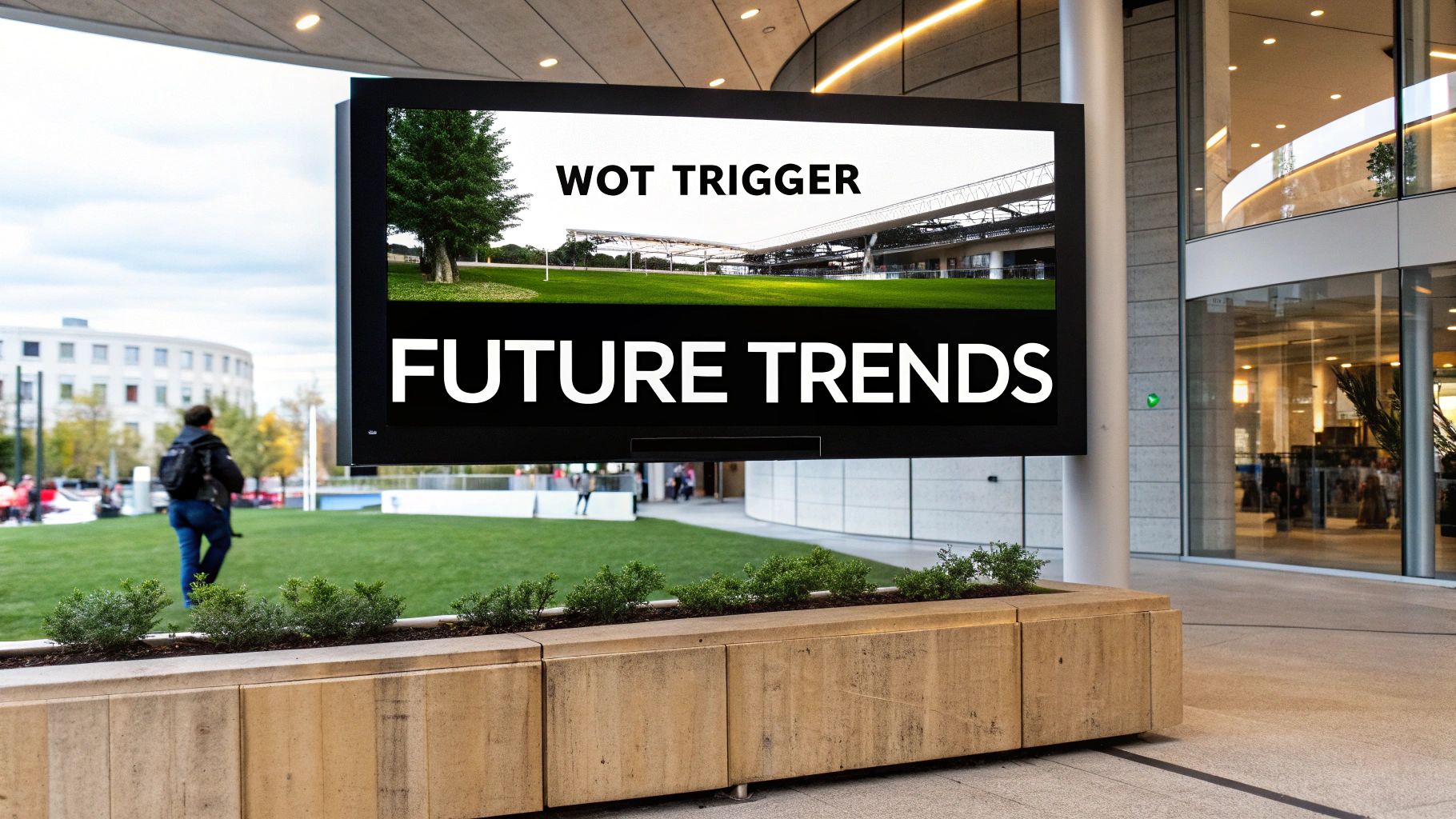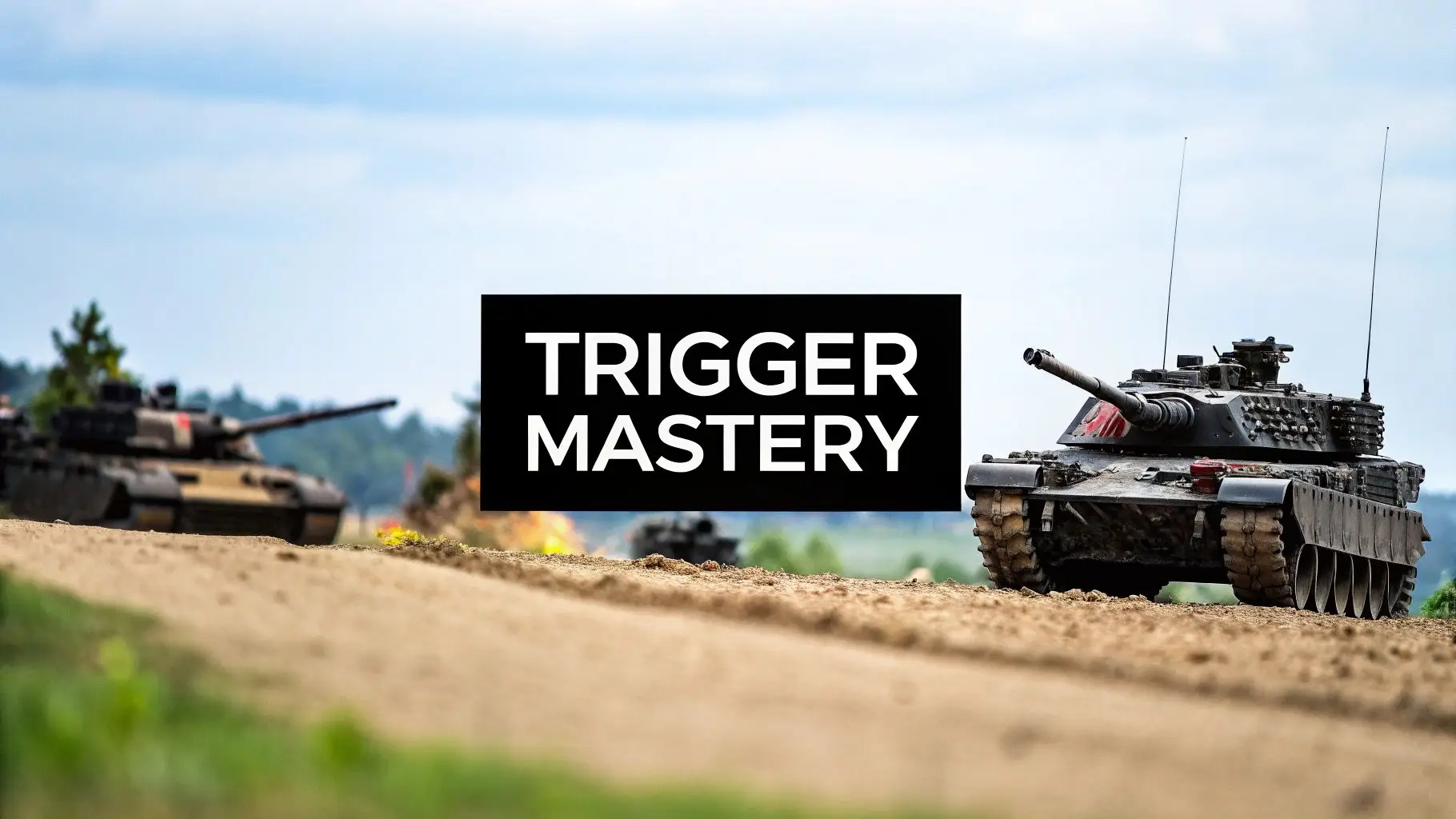The Hidden Mechanics Behind WoT Trigger Systems

Let’s explore the intricacies of WoT trigger systems in World of Tanks. These often-overlooked mechanics can significantly impact your in-game performance. While the term “trigger” on platforms like the AR-15 refers to the firing mechanism, in World of Tanks, it represents the act of firing your tank’s main gun.
This seemingly simple action involves a complex series of calculations that affect accuracy and effectiveness, especially when considering the unique characteristics of each tank class.
Trigger Mechanics and Tank Classes
The game’s physics engine processes your WoT trigger input differently based on your tank. Heavy tanks, known for their armor and firepower, often have longer reload times and greater gun dispersion.
This makes trigger timing crucial, especially at long ranges. Conversely, light tanks, with their speed and maneuverability, usually have faster firing rates and better gun handling. This allows for more aggressive trigger work, like snapshots and rapid fire in close combat.
Platform Differences: PC Vs. Console
The platform you play on also affects WoT trigger systems. PC players with a keyboard and mouse have finer control over aiming and firing, allowing for precise trigger manipulation.
Console players using controllers face different challenges. While aim assist helps, mastering trigger control on a controller requires a different approach, especially for techniques like pre-firing or tracking moving targets. Adapting your WoT trigger technique to your platform is essential.
Debunking Myths and Maximizing Performance
Misconceptions about WoT triggers can hinder progress. One myth is that rapidly clicking the trigger increases fire rate. This only wastes shots and reduces accuracy.
Focus on controlled trigger pulls, timed with your tank’s reload and considering factors like reticle bloom. Consistent updates and new features in World of Tanks often increase player engagement. The game maintains a daily player count of approximately 12,449 players, reflecting its popularity since its 2010 release.
This enduring appeal is evident in its expansion to multiple platforms, including PC, PlayStation 4, Xbox One, and Steam. Find more detailed statistics here.
By understanding WoT trigger systems, adapting to your platform, and dispelling myths, you can elevate your gameplay. This knowledge lets you leverage each tank class’s nuances and optimize your trigger technique. This leads to our next topic: optimizing your WoT trigger configurations for victory.
Pro-Level WoT Trigger Configurations That Win Matches

Optimizing your World of Tanks (WoT) trigger configurations is crucial for achieving victory. These settings aren’t universal; they must be tailored to your individual playstyle, preferred tank class, and your gaming platform. This section explores the intricacies of pro-level WoT trigger setups, giving you the knowledge to dominate the battlefield.
Sensitivity Curves and Trigger Thresholds
Fine-tuning sensitivity curves and trigger thresholds significantly impacts your in-game performance. A lower sensitivity can enhance accuracy when sniping at long range. Conversely, a higher sensitivity allows for faster target acquisition in close-quarters combat.
This is particularly important for players who prefer Tank Destroyers or Light Tanks, respectively. Adjusting trigger thresholds can also help prevent accidental firing and optimize burst fire for those critical moments.
Platform-Specific Optimizations
Optimizing your WoT trigger setup depends heavily on your platform. PC players using a keyboard and mouse benefit from adjustable DPI settings. This allows for precise aiming and quick adjustments, which are invaluable in intense battles.
Console players using controllers face a different challenge. They must find the ideal balance between aim assist and manual control. Adjusting the controller’s dead zones and sensitivity is essential for optimal trigger responsiveness.
Playstyle Adaptability
Your preferred playstyle heavily influences your ideal WoT trigger configuration. Aggressive players, often favoring Heavy or Medium Tanks, might prefer higher sensitivity and faster trigger responses for close-range brawling. This allows them to quickly react and track enemy movements during heated engagements.
Snipers, who frequently use Tank Destroyers, often prefer lower sensitivities for pinpoint accuracy when taking long-range shots.
Finding Your Optimal Settings
Finding your perfect WoT trigger settings requires experimentation and fine-tuning. Start with a basic configuration and gradually adjust the sensitivity, thresholds, and other relevant settings. Test these changes in various scenarios and with different tanks to understand their impact. This iterative process helps you identify the personalized WoT trigger configuration that best suits your individual style and hardware.
To help you get started, let’s take a look at the following table. It provides some recommended starting points for configuring your WoT trigger settings based on different tank classes. Keep in mind these are general recommendations. Personalization based on your preferences and hardware is key for optimal performance.
WoT Trigger Settings Comparison
The table below offers a starting point for configuring your WoT trigger settings based on tank class. Remember, these are general guidelines. Personalization based on individual preference and hardware is essential.
| Setting Type | Heavy Tanks | Medium Tanks | Light Tanks | Tank Destroyers |
|---|---|---|---|---|
| Sensitivity | Medium | Medium-High | High | Low-Medium |
| Trigger Threshold | Medium | Medium | Low | Medium |
| Aim Assist (Console) | Low-Medium | Medium | Medium-High | Low |
| Dead Zone (Console) | Small | Small | Small-Medium | Small |
By understanding these pro-level WoT trigger configurations and adapting them to your needs, you can gain a significant advantage in battle. This improved control translates into better accuracy, faster reactions, and ultimately, more wins. This leads us into the next topic: elite WoT trigger techniques for outplaying opponents.
Elite WoT Trigger Techniques That Outplay Opponents
In the intense world of World of Tanks (WoT), mastering advanced trigger techniques is the key to elevating your gameplay from good to truly elite. These techniques aren’t just about quick clicks; they involve a deep understanding of game mechanics and predicting your opponent’s next move. Let’s explore some high-level strategies used by the best WoT players.
Micro-Adjustments During Reticle Bloom
Accuracy in WoT hinges on even the smallest movements. Reticle bloom, the widening of your aiming circle after firing, is a crucial factor. Elite players actively counteract bloom with micro-adjustments, keeping their aim steady even as the reticle shrinks. This requires precise mouse control and an intuitive understanding of each tank’s handling. A heavy tank with high dispersion, for example, demands more significant adjustments than a light tank with superior gun handling.
Pre-Firing Weakspots
Predicting enemy movement is essential for maximizing damage. Pre-firing weakspots involves shooting at where you anticipate an enemy’s vulnerability will be before they even appear. This tactic is particularly effective in urban combat or around corners. It requires strong map awareness and knowledge of common enemy positions. Understanding reload times also helps you pre-fire effectively without wasting precious ammunition.
Shot Timing and Enemy Reload Cycles
Gaining the upper hand in a duel often comes down to synchronizing your shots with the enemy’s reload cycle. By recognizing when an opponent is vulnerable during their reload, you can exploit their inability to return fire. This involves observing their firing patterns and developing a sense of their reload timing. Knowing the specific reload times of common tanks allows you to press your advantage when they are defenseless.
Tank-Specific Trigger Rhythms
Every tank in WoT handles differently, and mastering their individual characteristics is vital for elite performance. Developing tank-specific trigger rhythms, the optimal firing cadence for each tank, maximizes damage output without sacrificing accuracy. A high rate of fire tank might benefit from controlled bursts, whereas a slow-reloading tank requires more deliberate shots. This knowledge allows you to adapt your trigger technique to every situation.
Practical Drills For Trigger Mastery
Honing your trigger skills takes dedicated practice. Drills designed by competitive players focus on targeting moving targets, practicing micro-adjustments, and simulating combat scenarios. These drills build muscle memory and timing awareness, allowing you to perform under pressure and consistently land critical shots in the heat of battle. By mastering these elite WoT trigger techniques, you’ll significantly elevate your gameplay and consistently outmaneuver your opponents.
Insider WoT Trigger Tactics From the Pro Community

Going beyond the basics of trigger control, let’s explore the advanced techniques used by the best in World of Tanks (WoT). These strategies, drawn from the experience of clan wars champions, tournament MVPs, and respected content creators, offer valuable insights into maximizing the impact of WoT trigger control.
Map-Specific Trigger Strategies
The terrain of the battlefield plays a significant role in shaping trigger tactics. On open maps like Prokhorovka, long-range combat demands patience and precision. Holding your WoT trigger until the reticle is fully aimed minimizes dispersion, increasing your chances of a penetrating shot.
However, on close-quarters urban maps like Himmelsdorf, a different approach is needed. Aggressive snap shots and quick trigger responses become essential. This adaptability is a hallmark of a skilled WoT player.
Tank-Specific Nuances
Just as maps influence strategy, so too do the individual tanks themselves. Each tank’s unique gun handling characteristics require adjustments to trigger techniques. The often inaccurate American tanks, for example, benefit from a more cautious WoT trigger finger, prioritizing controlled bursts over sustained fire.
In contrast, the renowned accuracy of German tanks allows for more aggressive trigger use, even at range. Understanding these nuances is key to mastering each tank.
Adapting Techniques to Skill Levels
While professional techniques offer valuable lessons, adapting them to your skill level is critical. Beginners should focus on the fundamentals: smooth, deliberate shots. Mastering basic trigger control is the foundation for more complex tactics.
More experienced players can explore advanced trigger manipulation, such as synchronizing shots with enemy reload cycles. This progressive approach allows players of all levels to improve their WoT trigger control. Interestingly, World of Tanks has a large player base, with approximately 19,723 players online at any given moment. The active monthly player count is estimated to be around 6.7 million. Learn more about WoT player statistics.
Common Mistakes Under Pressure
Even seasoned players falter under pressure. Panic firing—rapidly clicking the WoT trigger without aiming—is a common mistake, leading to wasted ammunition. Another common error is neglecting reticle bloom after firing. Failing to let the reticle reset before firing again significantly reduces accuracy.
Recognizing these pitfalls is crucial for maintaining composure and effective trigger discipline in intense situations. By incorporating these insider tactics and practicing consistently, players can refine their WoT trigger control and gain a significant battlefield advantage. This mastery translates into increased damage, improved survival rates, and a higher win ratio.
Winning With The Right WoT Trigger Hardware
The right hardware can significantly impact your World of Tanks performance. Whether you’re a seasoned tanker or just starting, understanding your equipment’s role in executing precise WoT triggers is crucial. Every component, from your mouse responsiveness to your keyboard’s tactile feedback, translates your intentions into in-game actions.
Input Devices And Trigger Response
Your input devices greatly affect your ability to execute those precise WoT triggers. A high-quality gaming mouse with adjustable DPI settings offers granular control over aiming and firing. This precise control is especially important for split-second decisions that often decide a battle’s outcome.
A responsive keyboard with anti-ghosting capabilities is also vital. This ensures every command registers, preventing missed shots due to key rollover issues. For console players, controller choice and customization options significantly affect trigger performance.
Budget-Friendly Vs. Premium Options
While premium peripherals often have impressive features, it’s important to assess if they translate to real gameplay improvements. Many budget-friendly mice and keyboards offer excellent performance comparable to more expensive options. Prioritize features like adjustable DPI, polling rate, and ergonomic design over flashy aesthetics or brand recognition.
However, some specialized peripherals, like controllers with adjustable triggers or keyboards with macro capabilities, can offer distinct advantages in WoT. Carefully consider these benefits against your budget and play style before investing.
Input Lag and Trigger Control
Input lag—the delay between your action and the in-game response—can significantly affect aiming accuracy. This lag can come from your hardware, software, or network connection. Minimizing input lag is key for optimal trigger control.
Regularly updating your drivers and optimizing your game settings can help reduce lag and improve trigger responsiveness. A wired connection over wireless can also minimize potential delays.
Hardware Maintenance And Troubleshooting
Maintaining your hardware is just as important as choosing the right components. Regular cleaning prevents dust and debris from affecting trigger responsiveness. Check for wear and tear and replace parts promptly to avoid performance drops.
Here’s a simple maintenance checklist:
- Clean your mouse sensor: Use a cotton swab and isopropyl alcohol.
- Check keyboard switches: Ensure they function correctly and aren’t sticking.
- Inspect cables: Look for damage or fraying.
Troubleshooting common hardware issues can also prevent subtle degradation of trigger control. A faulty mouse button can cause delayed shots or misclicks, while a sticky keyboard key can hinder complex maneuvers. Identifying and fixing these issues early on will improve your gameplay.
To illustrate how hardware choices influence trigger response in World of Tanks, let’s take a look at the following table. Keep in mind these are illustrative figures and can vary based on specific models and configurations.
WoT Trigger Response by Hardware Type
Statistical comparison of input lag and response time across different controllers and input devices
| Device Type | Input Lag (ms) | Response Time | Price Range | Durability Rating |
|---|---|---|---|---|
| Standard Mouse | 10-15ms | Moderate | $10-$50 | Medium |
| Gaming Mouse | 1-5ms | Fast | $30-$200 | High |
| Membrane Keyboard | 15-25ms | Moderate | $15-$50 | Medium |
| Mechanical Keyboard | 5-10ms | Fast | $50-$250 | High |
| Standard Controller | 20-30ms | Moderate | $40-$80 | Medium |
| Pro Controller | 10-20ms | Moderate-Fast | $80-$200 | High |
By considering these factors and choosing the right hardware, you can significantly improve your WoT trigger performance and gain a competitive edge. This translates your skills and tactical awareness into precise actions, leading to more victories and a more enjoyable gaming experience.
The Evolution of WoT Trigger Mechanics and What’s Next

The world of World of Tanks (WoT) trigger mechanics is in constant flux. Driven by player feedback, technological advancements, and the pursuit of a more immersive experience, the game continues to change. This requires players to constantly adapt and refine their strategies to stay competitive. Let’s explore the potential future of WoT trigger mechanics and how these changes could reshape the battlefield.
Emerging Technologies and Their Potential Impact
The gaming industry continuously pushes technological boundaries. Developments like adaptive triggers and haptic feedback systems could revolutionize player interaction in games like World of Tanks. Imagine feeling the resistance on your trigger change as your tank navigates different terrains, or experiencing the recoil of your gun through vibrations in your controller.
These enhancements could add a new layer of realism and provide vital feedback. They could influence aiming, firing rate, and overall tactical decision-making. As WoT trigger mechanics evolve, understanding fuel management in related applications becomes increasingly relevant. Advanced fuel tank monitoring systems offer interesting parallels.
Impact on Tank Classes and Meta Strategies
Different tank classes would likely be affected in different ways by these advancements. Heavy tanks, with their high-powered guns and slower reload times, could benefit significantly from haptic feedback. This would allow players to better manage recoil and improve shot accuracy. Light tanks, known for rapid firing rates, might find adaptive triggers advantageous, providing more control over burst fire and target acquisition.
These changes would undoubtedly shift the current meta strategies. Players would need to adjust tactics and positioning to accommodate the new dynamics introduced by the evolving trigger mechanics. This continuous adaptation is a core element of World of Tanks’ enduring appeal.
Community Feedback and Future Implementations
Developer communication and player feedback are essential for the continued development of WoT trigger mechanics. Community requests for improvements, such as refined aiming systems and more realistic gun handling, will likely be addressed in future updates. This feedback loop keeps the game engaging and responsive to player needs.
Preparation Strategies for Future Changes
Staying ahead of the curve is vital for success in World of Tanks. Regularly checking developer updates and participating in test server sessions can provide valuable insights into upcoming changes. This proactive approach allows players to adapt their playstyle and master new techniques before they become mainstream.
By staying informed about emerging technologies, analyzing their potential impact, and engaging with the community, players can be prepared for the future of WoT trigger mechanics. This forward-thinking mindset will allow for quick adaptation, maintaining a competitive edge on the battlefield. Ready to upgrade your trigger game? Consider Wide Open Triggers for your AR-15 for a crisp, consistent trigger pull. Visit wottriggerpro.com for more information.
Article created using Outrank


One Comment
[…] Wot Trigger Mastery: Expert Tips for Tanks – Wottriggerpro says: April 13, 2025 at 4:38 pm […]